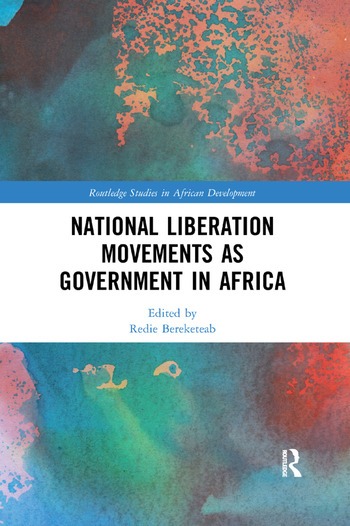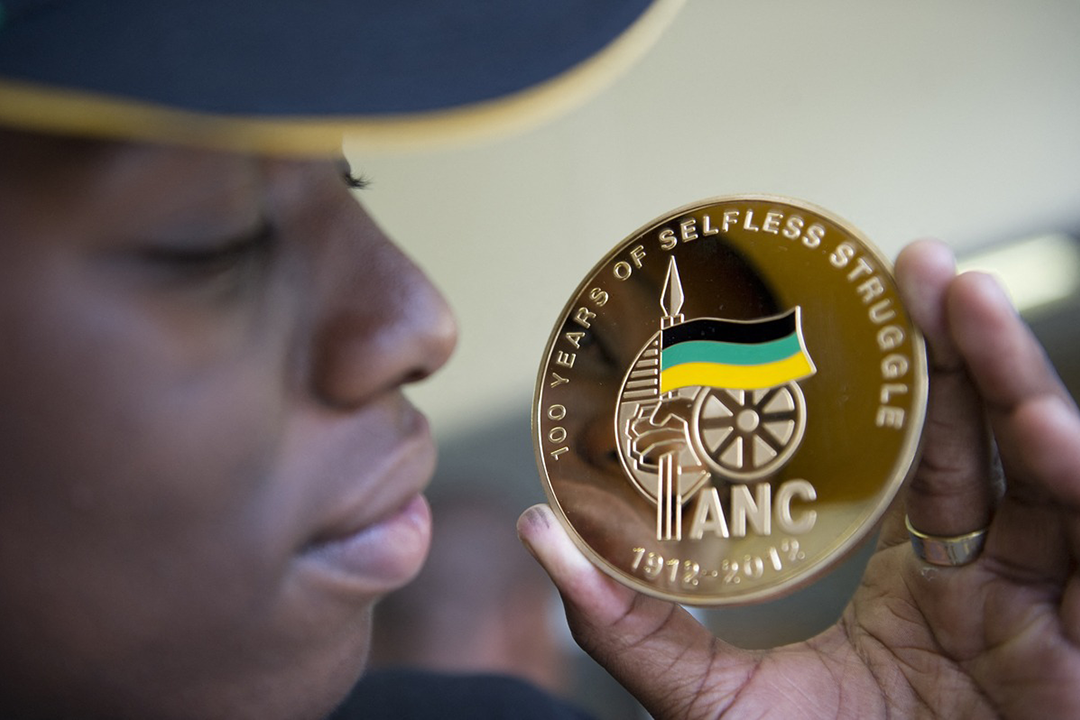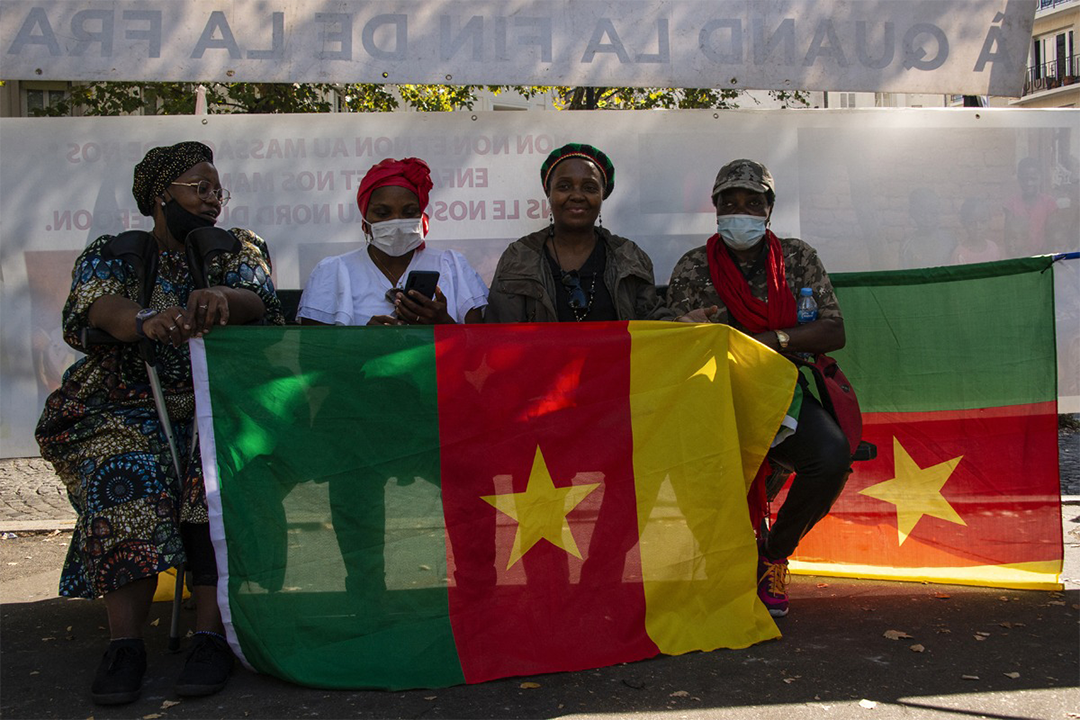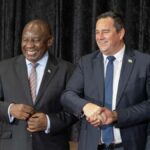Book Review
National Liberation Movements as Government in Africa
Edited by Redie Bereketeab
Routledge, 2018, Oxford
 Liberation movements begin as war machines animated by the desire for justice and, if successful, end up as governments clinging on to power. They undergo a transformation into their opposite, morphing into that which they sought to vanquish.
Liberation movements begin as war machines animated by the desire for justice and, if successful, end up as governments clinging on to power. They undergo a transformation into their opposite, morphing into that which they sought to vanquish.
Redie Bereketeab has edited a book that looks at 13 examples of this transformation, each author setting out the successes and failures of particular national liberation movements (NLMs) throughout Africa. The chapters are thick with the histories of each NLM, with assessments of their performance as government.
Chapters are grouped under four categories as struggles against: European colonialism (Angola, Algeria, Guinea-Bissau, Mozambique); white minority rule (Zimbabwe, South Africa); annexation by neighbouring countries (Namibia, Eritrea, South Sudan); and struggles to change regimes (Ethiopia, Uganda, Somalia and Somaliland).
Countries fighting colonisation gave birth to movements that were, from the beginning, wracked by internal divisions that often split off to become rivals. In Angola, three movements competed for state power (MPLA, FNLA and Unita). In Mozambique, Frelimo was ranged against Renamo, but it also suffered internal tensions. According to Adriano Nuvunga “there was conflict surrounding Frelimo’s origins, characterised by exclusions, expulsions and revolts … as leaders competed for control of the party”.
In both these Portuguese colonies, rivals went to war with the eventual victors. Angola was plunged into a civil war from 1976 until 2002. In Mozambique, Renamo, based in the north and centre of the country, waged a war against Frelimo before it entered party politics in 1994, almost winning the 1999 election – which was then effectively stolen by Frelimo.
Angola and Mozambique were imbricated in Cold War geopolitics: the MPLA was backed by the Soviet Union and Cuba, while Unita was supported by the United States and South Africa. Renamo got backing from Rhodesia and later South Africa. The Soviets also supported the PAIGC (African Party for the Independence of Guinea and Cape Verde) in Guinea-Bissau.
There were also conflicts related to ethnicity. In Angola, the FNLA accused the MPLA of being founded by the “sons of settlers”, while the MPLA accused the FNLA of being descended from Congolese. Frelimo saw divides between assimilados (assimilated groups from the north) and mestiços (people of mixed descent).
Each of these NLMs adhered to Marxist-Leninist or socialist ideologies, which were eventually discarded – some even earlier than 1989, when the demise of the Soviet Union meant it no longer provided support.
Yahia Zoubir argues that Algeria’s new rulers built an “authoritarian system in which ‘socialist democracy’ and the ‘power of the masses’ dominated political discourse but denied individual liberties in the name of socialist/collective freedom”. A pseudo liberalisation was put in place after riots broke out in 1988. A multi-party system was introduced, but when the Islamic Salvation Front almost won elections in 1992 the military declared a state of emergency, kicking off a civil war that lasted for a decade.
The authoritarian drift could be seen in all these countries. Paulo Ingles writes that “the Angolan regime is authoritarian in terms of political participation”, and conflicts between rivals “intensified the authoritarianism”.
Given these developments, multi-party democracy, with its attendant rights to assembly, free speech and media freedom, could not take hold.
Patrick Bond’s analysis of South Africa makes the case that the ruling African National Congress (ANC) has betrayed the revolutionary promises it made by yielding to a neoliberal global regime. Even before Jacob Zuma turned the government into a kleptocratic regime, the Mandela and Mbeki administrations gave in to the demands of big capital at the expense of the black majority, he posits.
Bond judges the ANC as a failed government on the basis of “neoliberal deals done by ANC leaders in the first decade of liberation”. He cites the rise and frequency of resistance and protests against a lack of service delivery as the cost of ANC policy.
In Zimbabwe, the Zimbabwe African National Union – Patriotic Front (Zanu-PF) came to power in 1980 after a protracted struggle. Sabelo Ndlovu-Gatsheni argues that from its beginnings, Zanu-PF claimed it was the sole embodiment of the will of the nation. Two years into independence, it perpetrated atrocities against ethnic Ndebele people in Matabeleland.
There was progress in health and education services, but an “authoritarian political system carried over from the Rhodesian Front … was hidden behind a façade of constitutional democracy”. Opposition was neutralised, but trade unions opposed the authoritarian drift. Gatsheni categorises Zimbabwe as a pseudo-democracy.
Countries in the Horn of Africa – the scene of an incredibly complex history – were free of colonialism before other countries on the continent, and subsequent conflicts took place between these countries rather than with colonial powers. Challenges to colonial boundaries saw the number of states go from four to seven.
Ethiopia is the largest and most powerful state, bordering Sudan, Eritrea, Somalia and Somaliland. Ethiopia was never colonised but occupied in 1936 by Italy and liberated in 1941. After rule by various regimes, it has been governed by the Ethiopian People’s Revolutionary Democratic Front (EPRDF) since 1991. Ethiopia held its first general election in 1995.
Bereketeab emphasises the manner in which the countries were imbricated in each other’s affairs: “At the time that Eritrea became an independent state, the region was already afflicted with festering conflicts. Ethiopia had yet to recover from several decades of civil war; Somalia was in disarray following the fall of Siad Barre; and Sudan was immersed in perennial wars in which centrifugal forces challenged the legitimacy of the post–colonial state. It was not long, therefore, before Eritrea became embroiled in these intra-state and inter-state conflicts.”
A creation of Italian colonialism, Eritrea is an exception here, as a struggle against annexation by a neighbour. A part of Ethiopia from 1952 until 1991, it entered into a second war with Ethiopia from 1998 to 2000 and the two now coexist in an uneasy state of “no war, no peace”. Nevertheless, Eritrea has emerged as a sovereign state moving to civil government.
Somalia is more aptly classed as a failed state, and Mohamed Haji Ingiriis says the question that must be explored is why Somali liberation movements disappeared. During Barre’s clan-based reign opposition forces such as the Somali National Movement (SNM) launched attacks from Ethiopia. When Barre was ousted in 1991, the country ceased to have a central political authority, with regions taken over by clan-based warlords. Somaliland and Puntland have since seceded or declared autonomy. The country is yet to have an election in which each citizen votes, as elections are clan–based, ensuring power sharing.
Ethiopia intervened in 2006 when the Islamic Courts Union took over Mogadishu. The ICU was vanquished, but spawned Al-Shabaab, which has mounted guerrilla attacks on a number of countries ever since. Since 2009, Somalia has been under the shaky rule of a transitional parliament.
The inclusion of Somaliland in this book is an exception, since it has not been recognised as a state despite declaring independence in 1991. Author Michael Walls says the ruling SNM has gone from being an insurgent group, to military establishment, to civilian government, but despite infighting, Somaliland is now on “an increasingly stable political path”.
South Sudan appears to have been doomed even before it seceded from Sudan, achieving statehood in 2011. Rabid infighting between leaders led to disagreements even before the first government was established, which quickly unravelled. L Nelson Moro concludes that both the rebellion against Sudan as well as the rebellion within South Sudan were the result of autocratic rule.
A number of the countries considered in this book are dysfunctional or even failed sates: Somalia, Sudan, Zimbabwe and Angola. Uganda is a functional authoritarian regime, while the rest are more or less functional democracies.
The NLMs considered here have all had tumultuous histories of rivalries and factional splits. Leaders accede by being brutal and remorseless, hacking their way to the top. When in power, they rule with the same brutality, foreclosing the development of pluralism, democracy and tolerance. They suppress the development of institutions, precisely because these will facilitate accountable government. John Markakis speaks of a “democratic deficit”, noting that most NLMs resort to military rule when their control is threatened.
Habits necessitated by struggle, such as loyalty, secrecy and self-reliance, turn into anti-democratic traits after liberation. “The continuation of the liberation political culture into the post-liberation period promoted rigidity instead of innovation,” says Bereketeab
Many African countries are dominated by former liberators in one–party states. Zoubir notes that “the conviction that countries with just one strong party were in a better position to modernise society has been disproved by the catastrophic results of such political systems”. Opposition exists in pseudo–democratic regimes, but these parties are kept in check and not allowed to grow. When they win elections, results are declared unacceptable.
NLMs have often suppressed ethnic bodies and tribes, leading to a return of the repressed, with ethnic conflicts bedevilling many states. Acceptance of colonial boundaries has exacerbated these conflicts, especially in the Horn of Africa.
Most NLMs retain power by patronage and clientelist networks, keeping allies in place by conferring state positions, tenders and other lucrative opportunities.
Sabelo Ndlovu-Gatsheni says that when NLMs become political parties, they become “simple ‘electoral machines’ used to ‘conquer’ and ‘retain power’. Politics is reduced to a narrow and violent road leading to the state house.” They conflate “nation with state, party with the state, leader with party, and consequently produce uncaring dictatorial regimes dominated by personality cults, greed and injustice”.
Reading the book is a sobering, even depressing experience, highlighting as it does the failure of most African states in their quest to achieve political stability, economic wellbeing and national unity to usher in peaceful and cumulative progress
TEXT BOX – In constant flux
In just two years since this book was published in 2018 – with most chapters written in 2017 – many changes have taken place.
In Algeria, Abdelaziz Bouteflika was ousted by mass resistance after trying to stand for a fifth term after ruling for two decades.
Omar al Bashir was deposed in a coup in Sudan in 2019 and charged and found guilty of corruption. In South Sudan, Salva Kiir and Riek Machar formed a coalition government in 2020.
Angola saw Eduardo dos Santos step down in 2017 after 38 years in power, and his successor João Lourenço has begun a campaign to root out corruption and roll back the influence of the Dos Santos family.
In Zimbabwe, Robert Mugabe was ousted in 2018 and succeeded by Emerson Mnangagwa, who was elected leader of Zanu-PF. His reign has been described as even more despotic than that of Mugabe.
In South Africa, Jacob Zuma was removed by the ANC in February 2018, and Cyril Ramaphosa took his place as president of the party and of the country, ending a period of state capture that saw massive looting of the state.
In Ethiopia, Abiy Ahmed became prime minister in April 2018, and after a promising start, since then the country has seen ethnic clashes between the Oromo and the Gedeo peoples, with up to 1.4m people fleeing their homes. Abiy has embarked on a war with the Tigray People’s Liberation Front, which has seen refugees flock to Sudan.
Yunus Momoniat is a researcher and writer at South African History Online and an occasional political commentator.














